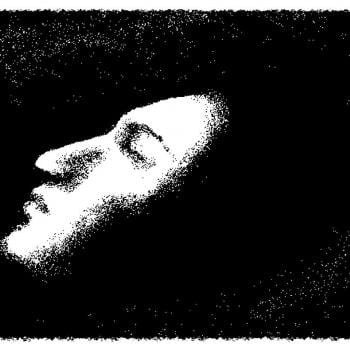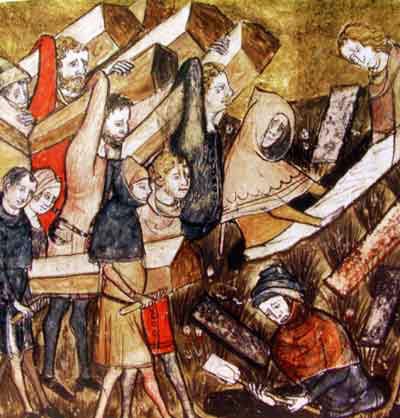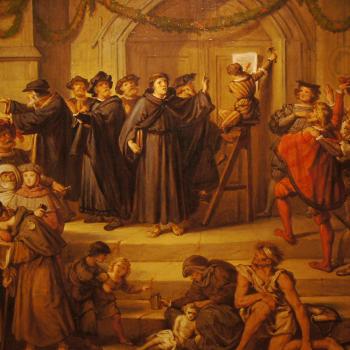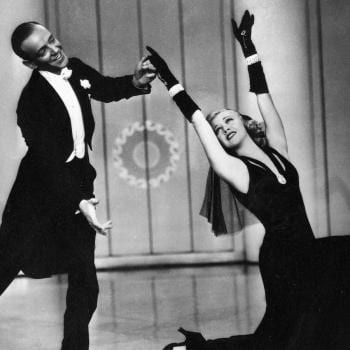- Trending:
- Pope Leo Xiv
- |
- Israel
- |
- Trump
- |
- Social Justice
- |
- Peace
- |
- Love

RELIGION LIBRARY
Scientology
Suffering and the Problem of Evil
Scientology, like most religions outside of the Abrahamic tradition, does not recognize a problem of evil as such, namely the problem that arises because of the need to reconcile the existence of a loving and all powerful deity with the existence of suffering and evil. According to Scientology, God can be conceived of as the first Cause from which the universe originates, but is generally seen as that Ultimate Reality that lies ahead as the individual considers the ever-encompassing eight dynamics, the last of which is Infinity. In both instances, God is seen as largely transcendent and distant from this work, and not pictured as either concerned on a day-to-day basis with the world or actively interfering in human life. Like Deists, Scientologists do not engage in prayer and devotional activity and, like other members of other esoteric groups, would tend to relate to God by trying to attune their lives with the Divine. In either case, how one relates to the divine is purely an individual concern.
That said, Scientologists fully recognize the existence of suffering and evil on both the individual and group level, and a significant thrust of the church's life aims at the eradication of human suffering and the elimination of social evils. Scientology originated in L. Ron Hubbard's ruminations on the suffering of people he observed in places such as the Oak Knoll Naval Hospital, where he was a patient at the end of World War II. He offered his initial observations on evil in Dianetics: The New Science of Mental Health (1950).
Hubbard saw the mind as divided into two parts-the analytical mind and the reactive mind. The former is that mind that operates under most normal circumstances. It observes the world, thinks about what it observes, stores memories, solves problems, and reasons at an abstract level. However, in times of stress and trauma, the analytical mind is suppressed and the reactive mind takes over. The reactive mind is seen as acting purely in a stimulus-response mode. It observes what is happening, records complete three-dimensional images (including feelings) of what is occurring, and stores them uncritically in the unconscious, away from easy retrieval by the analytical mind. These images (called engrams) stored by the reactive mind can be activated by present occurrences that resonate with elements of those images. When activated, the engrams can bring to the fore feelings of pain and the spectrum of negative emotions that were stored when originally recorded. Activated engrams about which the analytical mind is unaware can cause a range of symptoms and dysfunctional behavior in the individual.
Engrams are stored in the order in which they are recorded on the mind's record of images and memories that accumulate through one's life. Scientologists refer to this record as the time track, and see it as containing a rather accurate record of one's present human life. The initial phase of Scientology classes and counseling (auditing) is concerned with revisiting the time track, removing the emotive content of the engrams, and erasing the effects of the reactive mind.
In completing the first phase of church life, the Scientologist arrives at the state of Clear, defined as having erased the reactive mind. A Clear is believed to no longer have a reactive mind, and once gone, that element of his or her mind will not return. This condition brings with it a variety of benefits, including the erasure of pain and negative emotions (which should have occurred gradually during the process of reaching Clear), and the basic goodness of the person comes to the fore. It is believed that while one is still engaged in the process of dealing with the reactive mind, but short of the state of Clear, it is possible for it to revive and return, but once one has attained Clear, the reactive mind is gone forever.
Engrams and the reactive mind are seen as the source of human suffering, which in turn leads to aberrant and anti-social behavior. Depending upon the nature of stored engrams, the individual can be blocked in learning, diverted into crime and other negative activities such as drug abuse, develop antisocial attitudes and behavior, and suffer from a variety of stress-related illnesses. Initially, the Church of Scientology was designed to work with individual church members to deal with their pain and suffering. That activity is the still the primary purpose of the church's existence. However, along the way, it was discovered that apart from the program of church classes and counseling, particular aspects of their founder's approach to individual betterment could be utilized to deal with particular problems faced by the society. The first problem to be considered was criminality and drug abuse. It was followed by consideration of illiteracy and the loss of a consensus about a moral code in the modern pluralistic world. Reflections on these social issues undergirded the church's founding and nurturing of its social betterment programs.
In the early 1960s, many Scientologists assumed that becoming Clear was the ultimate goal of Scientology, but as Hubbard continued to expand his own thinking of the human situation, he envisioned the Clear as a person who had removed the encumbrances to life and was now ready to be educated as to the free thetan she or he had become. At the same time, he began to understand some of the implications of past lives. While the basic levels of Scientology did their work in eradicating the reactive mind, becoming Clear did not eradicate all the negativities from the individual's life. Individuals bring into this life the negative accretion of many past lives.
Thus the Operating Thetan (OT) levels are designed to educate the thetan and invite its discovery of its potentials while at the same time introducing the OT student into the nature of the aberrations carried over from past lives and provide the resources to handle them. The exact content of the OT levels is reserved for those church members enrolled in the OT levels and they are discussed with outsiders only in the most abstract manner. However, church leaders have acknowledged that the OT Levels offer a larger understanding of human history and address the origin of those aberrations that remain after one has become Clear; this involves a significant amount of auditing and self-auditing (in which the student runs through the auditing procedures without an auditor being present). The amount of auditing varies from individual to individual.
Study Questions:
1. Where does God fit into Scientology? How do Scientologists relate to God?
2. Why could it be said that Scientology has formed out of suffering?
3. How is the mind divided? What does each part do?
4. What are Engrams? How do they, with the mind, create suffering?
5. What does Scientology teach to extinguish suffering?










